Understanding the Power BI Template
This document provides instructions for loading and using a Microsoft Power BI Template with the Gimmal Records OData Connector. The template demonstrates basic reporting capabilities and provides a starting point to develop reports using the Gimmal Records OData connection.
Any reporting application that can consume an OData connection ( as Tableau or Excel) can be used in conjunction with the Gimmal Records OData Connector. However, this template is designed exclusively for Microsoft Power BI Desktop.
The template can be downloaded from the Gimmal software download site here. Instructions for loading and using the template, along with descriptions of the included reports, can be found below.
Please contact your Gimmal Account Manager or Gimmal Support if you do not have access to the Gimmal software download site or the Gimmal Records OData API.
Prerequisites
Access to the Gimmal Records cloud service.
Access to the Gimmal Records OData connector.
A username and password to an internal Gimmal Records Service Account. These accounts are easily identified by their orange tile on the Secure page of the Gimmal Records Manager web.
Knowledge of Power BI Desktop.
Loading the Power BI report template
After downloading the template from the Customer Downloads page here, open the template in Power BI Desktop by:
Double-clicking the icon in File Explorer
Importing it from within Power BI Desktop.
Once opened, you will be prompted to select the appropriate OData URL for your application.
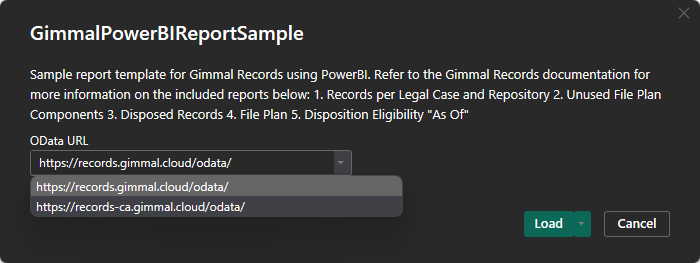
Select the correct OData URL for your Gimmal Records application, then click Load.
https://records.gimmal.cloud/odata/ for US tenants,
https://records-ca.gimmal.cloud/odata/ for Canadian tenants)
The OData feed dialog displays. Select Basic from the left menu and ensure the correct URL is selected in the drop-down.
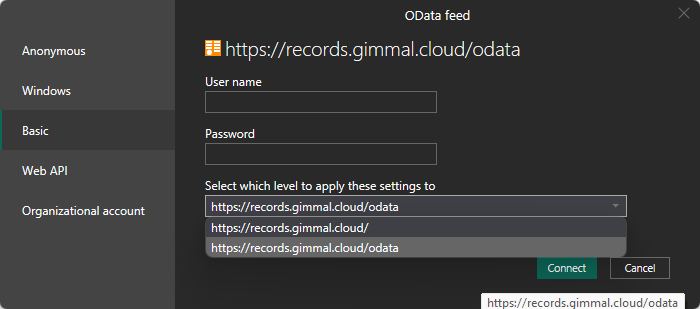
Enter the Gimmal Records Service Account User name and Password credentials under the Basic tab (as shown above) and click Connect. The data should begin loading shortly afterward. Depending on how many records you are managing, it may take some time for all data tables included in the template to load.
Privacy levels
If the Privacy levels dialog appears, check the box to Ignore Privacy Levels checks for this file. Then click Save.
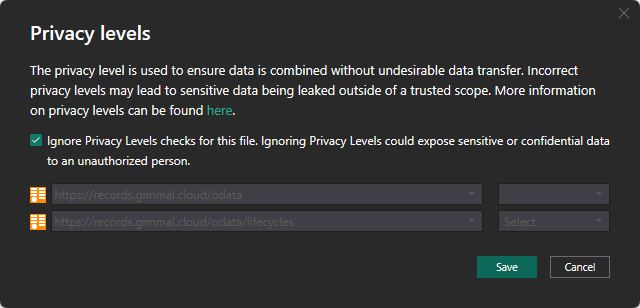
Blocked Queries
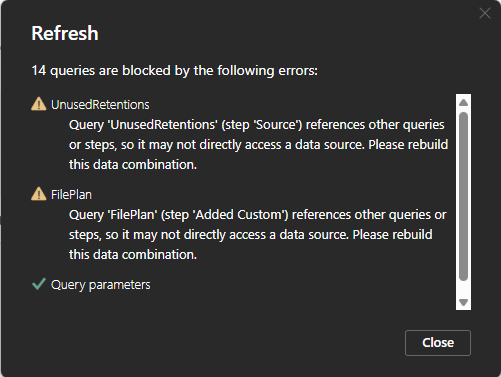
If you get a message similar to the message above, click Close. After a short wait, you will see the following messages at the top of the Report View page. To resolve this, click Refresh in the ‘Queries’ section in the middle of the Home ribbon. You should then see a window appear showing the data load status. Depending on the current activity level and the number of records in your application, it may take several minutes to complete.
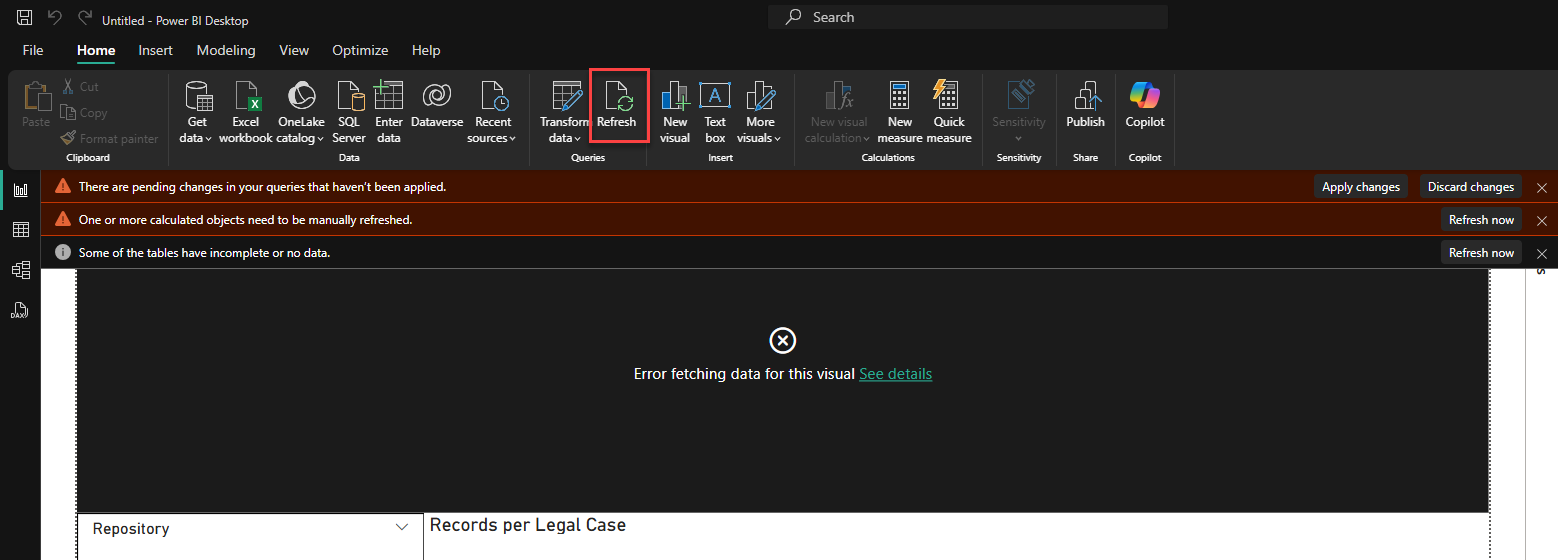
Relationships
The relationships between the tables used in this report can be found here.
When adding new data tables to your report, your reporting application may attempt to configure the relationships between the tables automatically. This automation may lead to erroneous results if not adjusted. Refer to the table relationships page for the correct relationships.
Report Pages
The Power BI Report Sample template provides five basic pages, each described in this section.
This basic template only includes those properties that exist for all records, regardless of their respective repositories.
Records per Legal Case and Repository
The Records per Legal Case and Repository page lists records with legal holds applied. These can be refined by selecting specific repositories/legal cases. A pie chart shows the number of records per legal hold.
If no records have legal holds applied, this page will be empty.
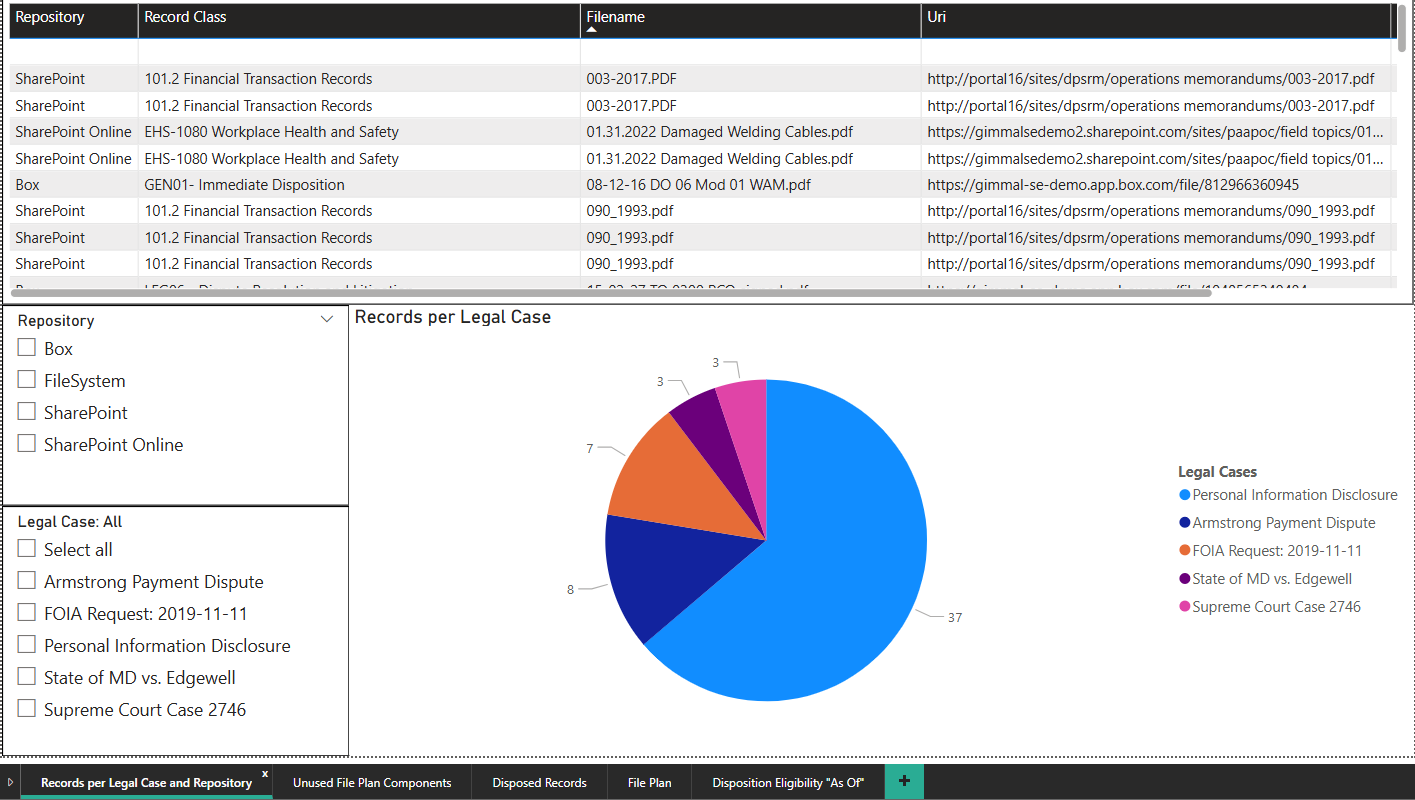
Records with legal holds applied, refinable by repository and Legal Case
This report uses the tables:
legalholds
records
recordsPropertyBag - created in Power Query using the procedure in Using the Property Bag.
Unused File Plan Components
The Unused File Plan Components page includes three lists of file plan components that are not being used.
Unused Triggers - Triggers (Event, Date, Rule, or Special) that are not used in any Retentions
Includes the Title, Type, and Description of each unused trigger
Unused Retentions - Retentions that are not used in any Lifecycle Phases
Includes the Title and Description of each unused retention
Unused Lifecycles - Lifecycles that are not associated with any Record Classes
Includes the Title, Description, and Notes of each unused lifecycle
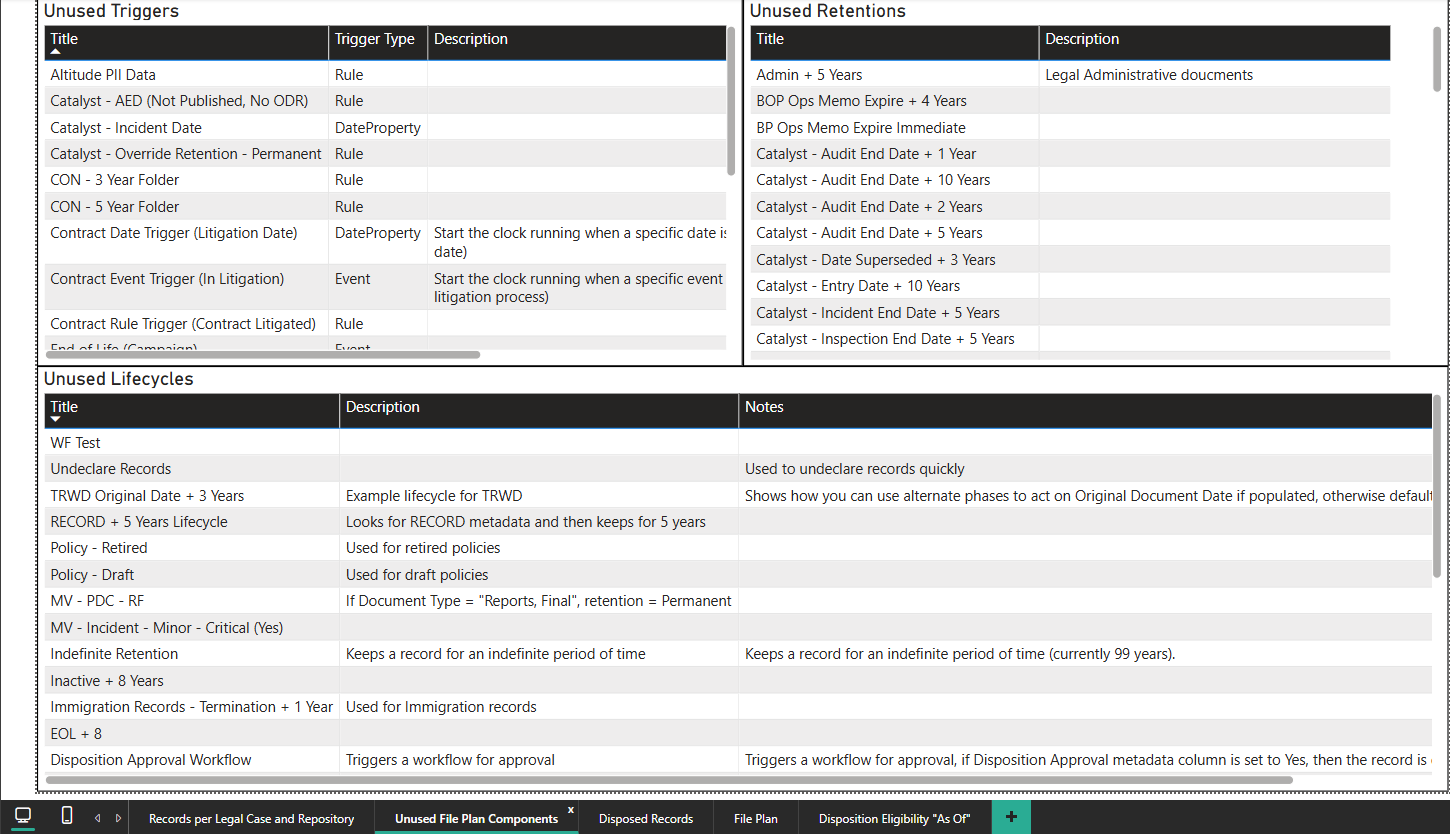
Unused file plan components
This report uses the following tables:
UnusedTriggers - Created by joining the triggers and retentions tables
UnusedRetentions - Created by joining the retentions and LifecyclePhases tables
UnusedLifecycles - Created by joining the lifecycles and recordclasslifecycles tables
Disposed Records
The Disposed Records page includes a list of disposed records, which can be refined by their date of disposition and selected record classes.
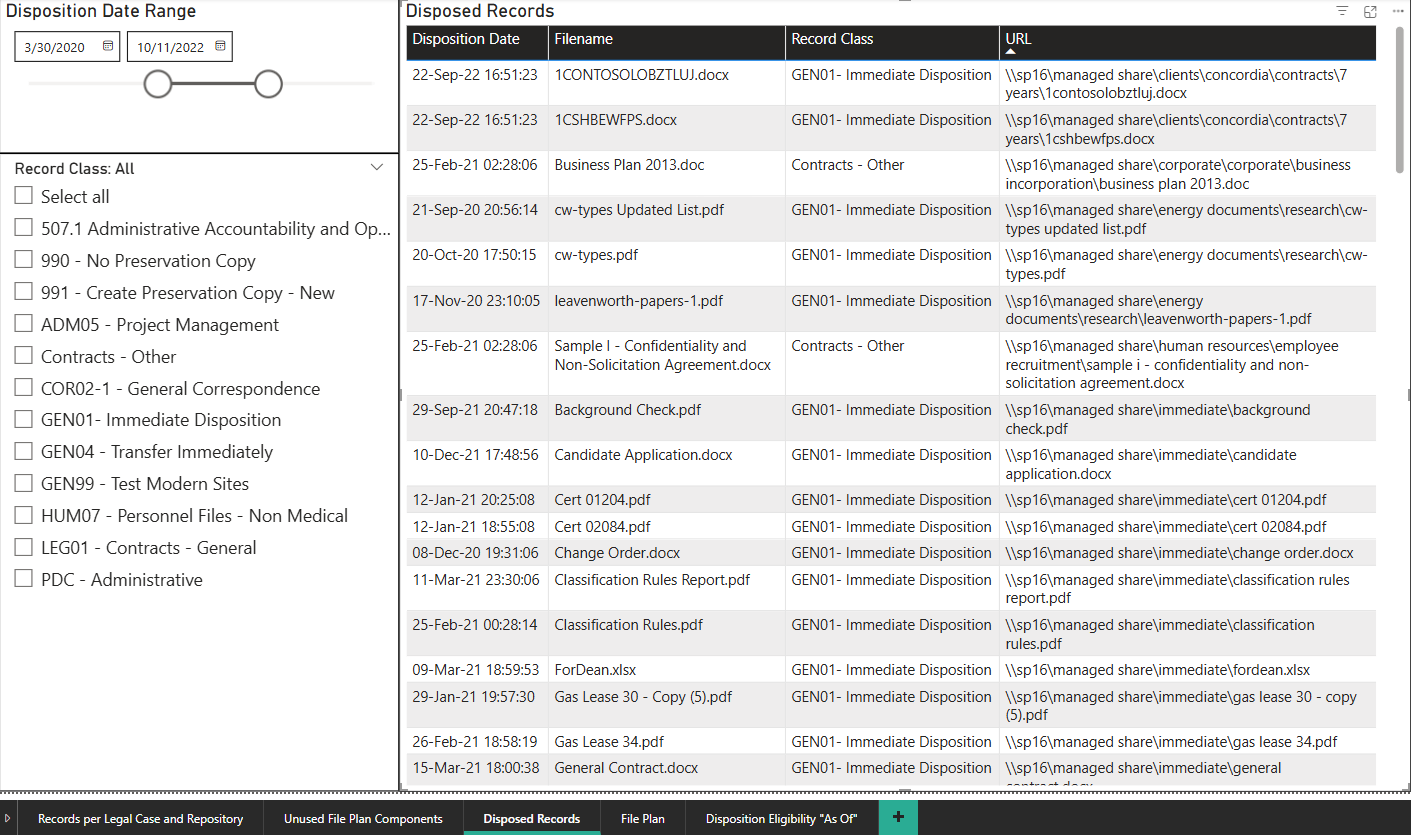
Disposed Records report
This report uses the following tables:
archiverecords
Records' information is only retained after disposition when the respective record class Archive properties are enabled.
File Plan
The File Plan page includes a selection of record classes, and their associated lifecycles and classification rules.
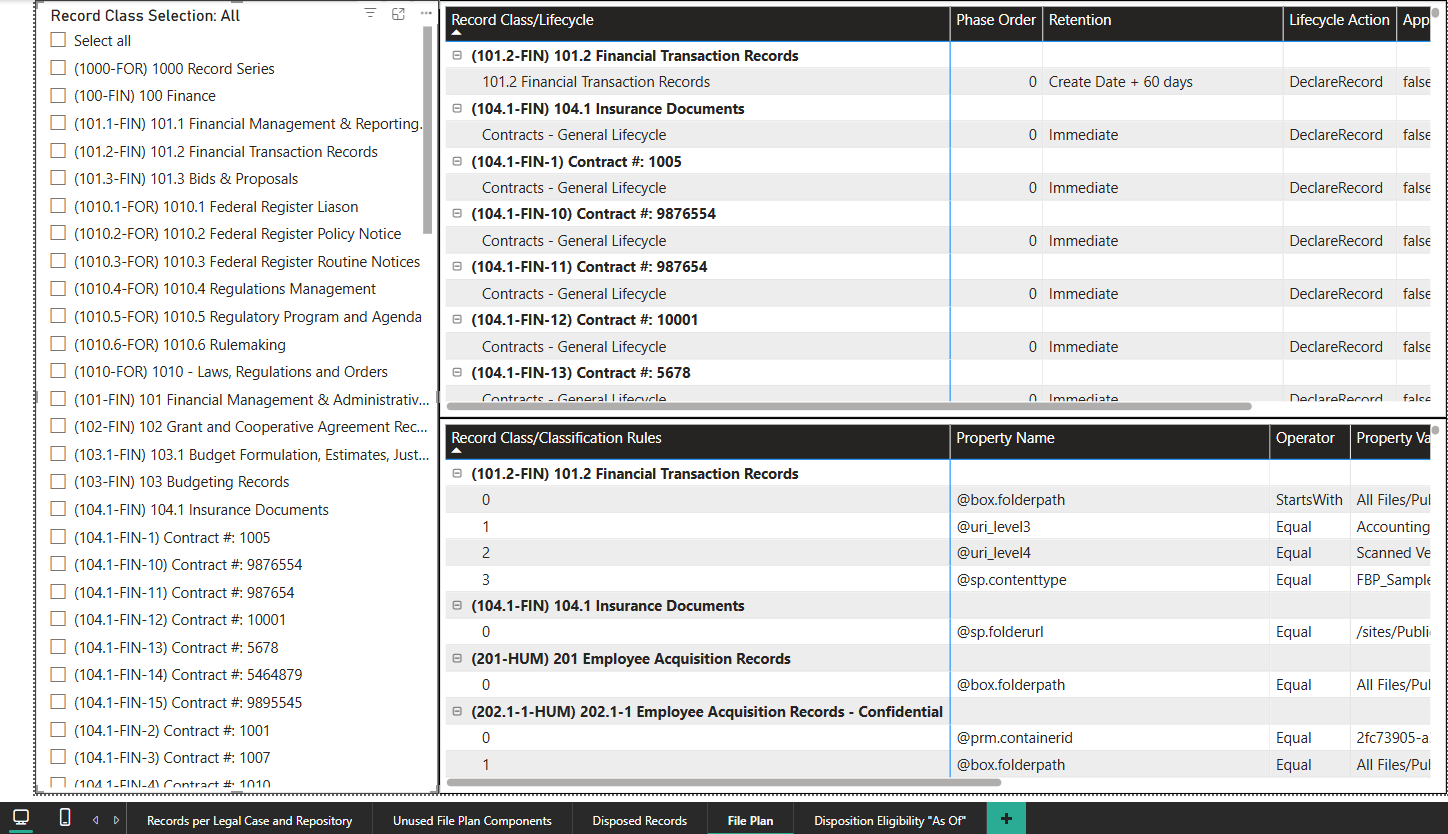
File Plan report including lifecycle phases and classification rules
This report uses the following tables:
FilePlan - Created by joining the recordclasses, RecordClassClassificationRules, recordclasslifecycles, LifecyclePhases, and retentions tables
Disposition Eligibility “As Of”
The Disposition Eligibility “As Of” page provides a listing of active (i.e, not yet disposed) records that can be refined by the current expiration date (of their current lifecycle phase). Based on the selected expiration date ranges, a count of records per repository is also provided.
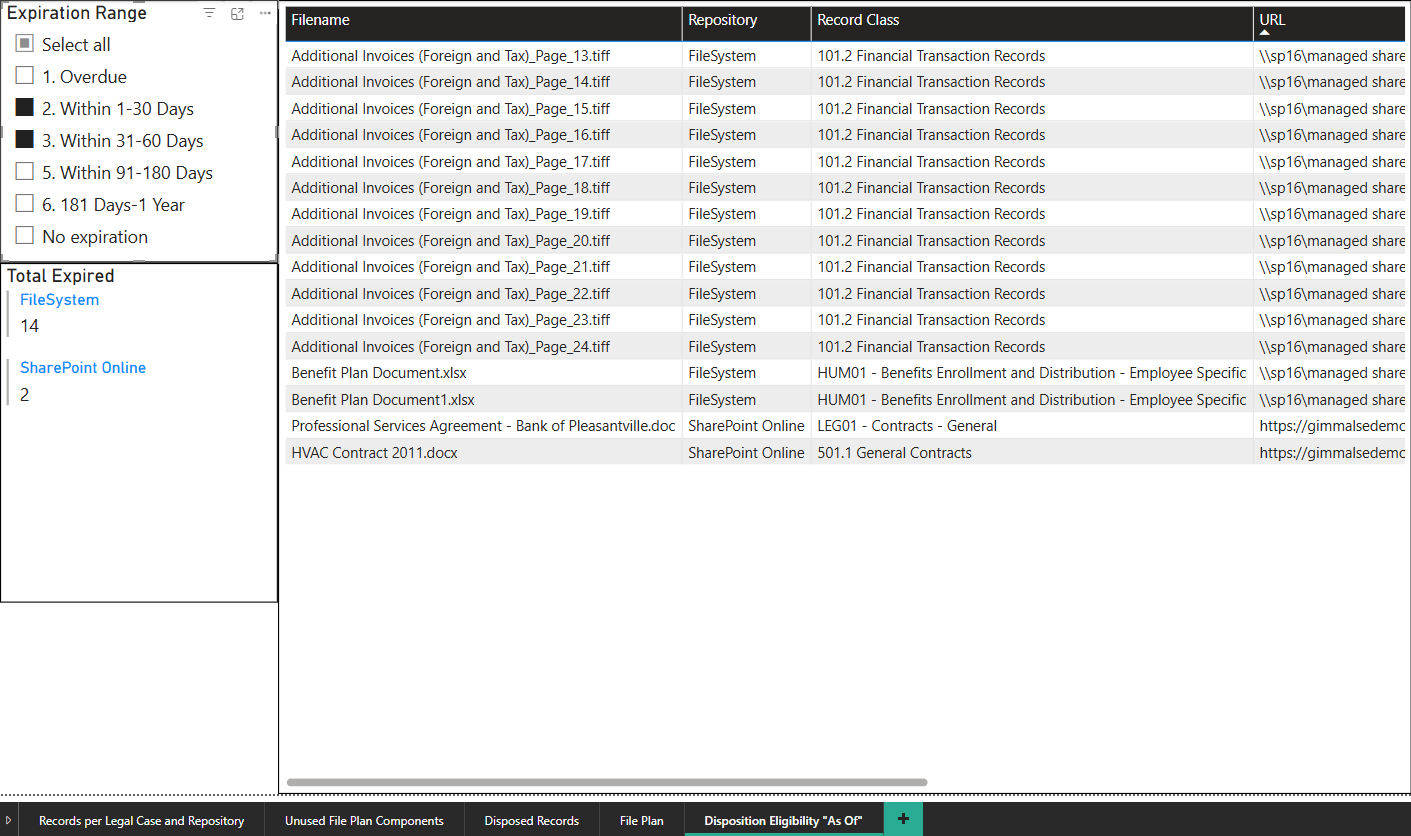
Records expiring within the next 60 days
This report uses the following tables:
records
recordsPropertyBag
